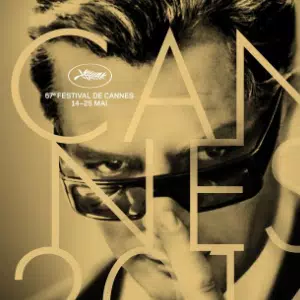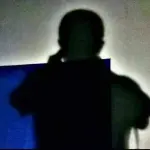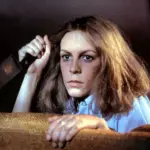The recent hype around Babygirl has once again called to mind the golden age of the erotic thriller genre.
Erotic thrillers used to be a big deal—especially in the 1990s. Slightly elderly moviegoers might recall the heyday of films like Sleeping with the Enemy, Basic Instinct, Malice, and Color of Night: eye-catching, steamy posters that enticed viewers’ desires, emblazoned with the names of major stars (Michael Douglas, Nicole Kidman, Julia Roberts, Bruce Willis, etc.) representing the backing of major Hollywood studios. Indeed, the 1990s may have been Hollywood’s horniest era, as the United States was at the height of its neoliberal boom, and the White House was occupied by one of America’s horniest presidents. The widespread popularity of erotic thrillers can be seen as an embodiment of that era’s spirit.

The golden age of erotic thrillers was not limited to the ’90s though. The genre began to flourish in the 1980s, with films like Body Heat, Fatal Attraction, and 9½ Weeks leading the way. Even in the early 2000s, a few titles, such as Original Sin and Unfaithful, managed to find moderate box office success.
Yet with the arrival of the 21st century, this type of movie all but vanished. We watched as the once-common big-studio erotic thriller—aimed at an adult audience and featuring major stars—nearly disappeared, while Babygirl and similar fare are exceptions that might just be fleeting.
What happened?

The film industry landscape: from adult-oriented to family-friendly
A fundamental fact of the film industry is that the kinds of movies which get made aren’t determined by what audiences want to see, but by which projects can earn studios the greatest profit.
During the ’90s, the U.S. market was still the main source of Hollywood’s earnings, and adult audiences were still the primary consumers. It made perfect sense for Hollywood studios to tailor content for adults, and erotic thrillers were precisely low-budget, high-return endeavors. Much like sci-fi and action, erotic thrillers could harness the star power of big names, but at a lower cost; plus, their sensational reputation drew fringe viewers into the theaters—then later fueled robust home-video rentals or purchases. This high-value, easily replicated formula propelled erotic thrillers to become a top Hollywood product in the ’90s.
They were also quick to produce. Because the success formula was so clear, studios could churn out erotic thrillers in short order, as long as sexy celebrities and A-list actors joined the cast. The former could provide the on-screen allure for the films, and the latter could contribute the so-called “prestige,” draping the films in a veneer of seriousness.

However, this situation shifted drastically in the early 2000s. As foreign markets overtook North America as the studios’ main revenue source—plus the massive success of The Lord of the Rings and Harry Potter—Hollywood gradually realized that big-budget movies aimed at global, all-ages audiences yielded the best ROI. The success of Marvel sealed the coffin for domestically targeted grown-up cinema. We can see this not only in the near-demise of erotic thrillers but also in the decline (or relocation to TV/streaming at reduced budgets) of mid-budget crime, suspense, and detective films. The death of the erotic thriller is just one sign of a much larger shift in Hollywood.
Porn everywhere
Beyond Hollywood’s shift in strategy, the easy availability of explicit content has also undercut erotic thrillers’ advantage. Some erotic productions had already moved to premium cable TV in the ’90s; the internet then thoroughly removed all barriers to obtaining porn. Whereas before, people might have felt embarrassed to buy or watch erotic titles in front of a clerk or seat neighbor, the web ended those inhibitions. And compared to erotic thrillers, there’s no need to wait for a plot or buildup to see the sexual content.

Changing zeitgeist (and what could Babygirl possibly change)
Another piece of the puzzle is that the spirit of the 2020s differs drastically from that of the 1990s. Post-Weinstein, Hollywood has become more sensitive about sexual subject matter. This has its upsides and downsides: On the plus side, it has effectively reduced men’s sexual exploitation of women behind the scenes; on the minus side, Tinseltown now appears increasingly skittish about sex, even approaching a 1950s-level prudishness.
Yes, in recent years, there have been some (streaming) erotic thrillers like The Voyeurs and Deep Water, but overall, Hollywood seems to be edging back toward a more conservative position on sexual topics, with women on-screen less likely to show desire towards men or bare their bodies - this kind of endeavor is no longer framed as liberating but more often as “self-objectification” or “pandering to the male gaze.”

In this climate, a woman-led film—directed, written, and produced by female filmmakers—like Babygirl may help liberalize a film landscape that is growing more conservative about sexuality. The female-led approach reduces the risk of off-screen exploitation of actresses or the on-screen objectification of female desire. Should Babygirl succeed at the Oscars or on VOD sales, it may encourage a more progressive, balanced approach to sex onscreen and help salvage a fragment of the once-thriving erotic-thriller genre from its near-extinction.





















































View replies 1
View replies 0